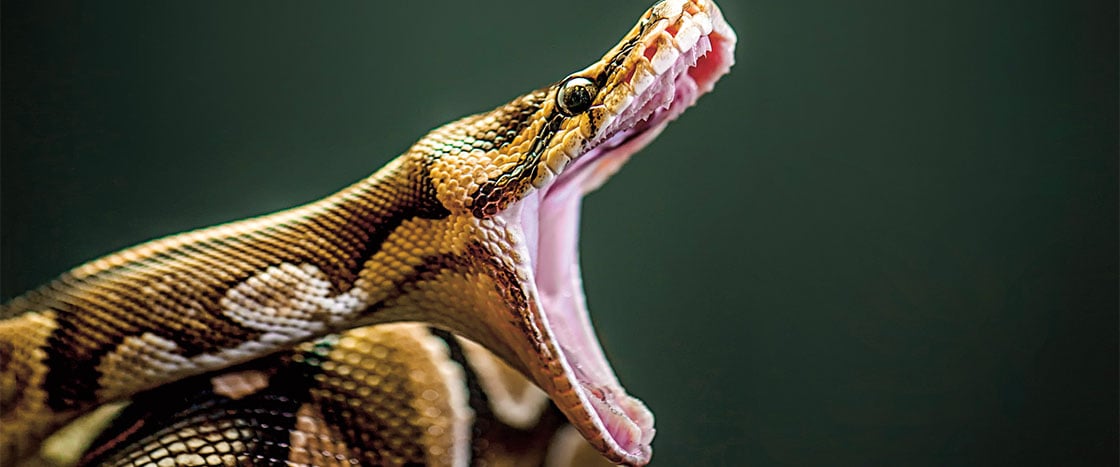One January morning in 2003, a group of families was exploring Florida’s Everglades National Park. It is a unique and beautiful wilderness, 2,400 square miles of protected wetlands. The visitors were admiring the wonders around them—rivers of golden grass stretching in all directions, the songs of frogs and crickets ringing in the humid air, the smell of orange blossoms from distant orchards. The group had high hopes for the day. Perhaps they’d see pink flamingos or majestic blue herons. Maybe they’d even catch a glimpse of an endangered Florida panther.
As it turned out, the visitors were about to see something more unusual—and horrifying—than they could have imagined.
Not far from the park’s entrance, they noticed a violent splashing in the water. As they approached, they saw a massive alligator wrestling with an enormous snake. They would later learn that the snake was a Burmese python, a species not naturally found in the Everglades or anywhere in North America. The alligator had its jaws clamped around the snake. The snake was wrapped around the alligator. The animals struggled like monsters in a horror film.
Some of the visitors caught the scene on camera. Within days, the footage was broadcast on TV stations and websites around the world.
To most people, this fight was little more than a thrilling and gruesome show. But to many wildlife experts, it was a symbol of a problem—a big, slithery problem.
For years, some officials in the Everglades had been warning that Burmese pythons were living and breeding in the park. They worried that these enormous beasts could have a devastating impact on the fragile environment of the Everglades. The wrestling match helped capture the world’s attention. But was it already too late?
One January morning in 2003, a group of families was exploring Everglades National Park in Florida. It is a beautiful wilderness with 2,400 square miles of wetlands. The visitors were admiring the wonders around them. Rivers of golden grass, songs of frogs and crickets, the smell of orange blossoms. The group hoped to see pink flamingos or blue herons. Maybe they’d even catch a glimpse of the rare Florida panther.
But the visitors were about to see something more unusual—and horrifying—than they could have imagined.
Near the park entrance, they noticed a loud splashing in the water. As they got closer, they saw a massive alligator wrestling with a huge snake. The alligator had its jaws closed hard around the snake. The snake was wrapped around the alligator. The animals struggled like monsters in a horror film.
Some of the visitors caught the scene on camera. Within days, the scene was shown on TV stations and websites around the world.
To most people, this fight was just a thrilling and awful show. But many wildlife experts knew it was a problem. A big, slithery problem.
Why? The snake was a Burmese python, a species not naturally found in the Everglades or anywhere in North America. For years, some workers in the Everglades had been warning that Burmese pythons were living and breeding in the park. They worried that these large snakes could bring harm to the environment. The wrestling match got the world’s attention. But was it already too late?


